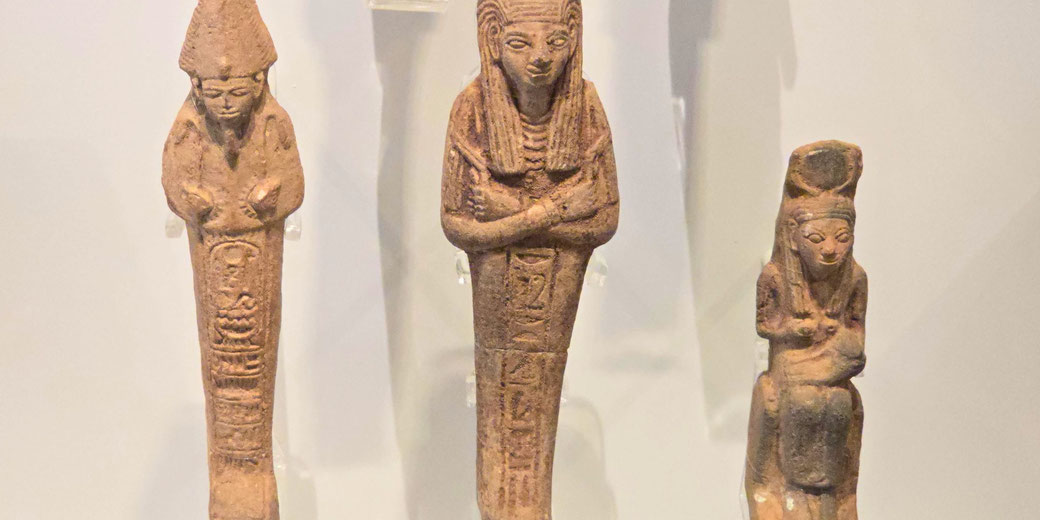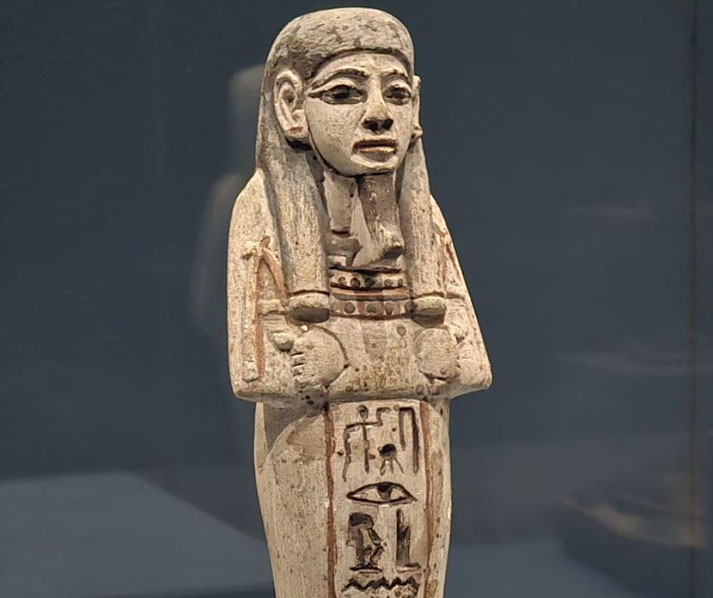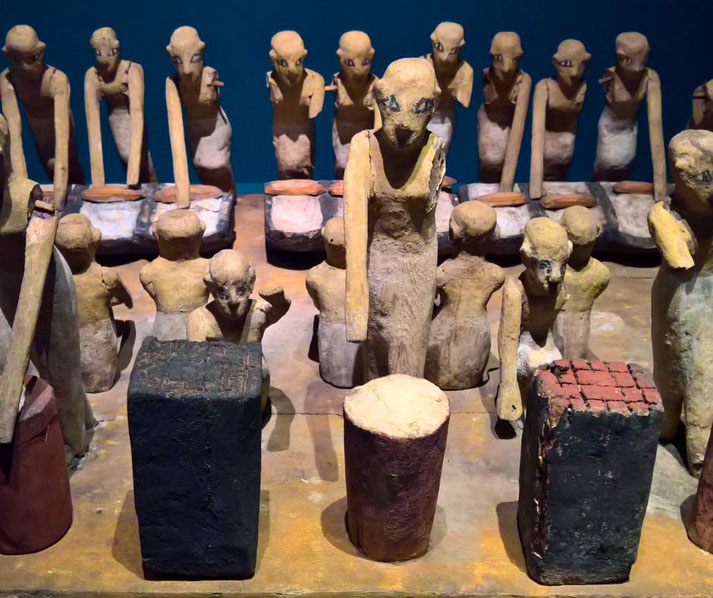Shabti: The magical ancient Egyptian servants created to work for eternity in the afterlife

When Egyptologists opened the ancient tombs of Egyptian civilisation, they were generally focused upon the glittering gold treasures and mysterious inscriptions along the darkened walls.
However, staring back at them from the shadows were often hundreds of tiny, unblinking eyes from small figurines known as shabti.
These artefacts provide a surprisingly detailed window into the unique hopes and fears of the ancient Egyptian people.
What were shabti dolls?
The shabti, also spelled as ushabti or shawabti, were small funerary figurines placed in tombs among the many grave goods in Egyptian burials.
Shabti were intended to act as magical substitute servants that the deceased believed they needed in the afterlife.
For example, when the deceased entered the paradise known as the Field of Reeds, he did not have to harvest food or do manual labour himself and could simply call upon the shabti to come to life and do it for him.
The term 'shabti' translates to 'answerer' and shows their intended purpose to answer the call to work.

The mystical origins of the shabti
The earliest shabti figurines date from the Middle Kingdom of ancient Egypt: around 2050 to 1650 BC.
The concept of using models or substitutes for the deceased in the afterlife may have originated in even earlier periods.
In the Old Kingdom (c. 2686–2181 BC), tombs included small models of servants, boats, and even bakeries and breweries.
These primitive models could be seen as precursors to the shabti.

The use of shabti peaked during the Third Intermediate Period (c. 1070–664 BC) when tombs could contain an entire workforce of shabti.
Some were shown holding agricultural tools and others, known as overseer shabti, were shown holding a whip and had a role in managing the worker shabti.
How were the shabti made?
Over the centuries, shabti changed from simple, crudely fashioned figures to detailed works of art.
Early examples dating back to the Middle Kingdom were often made from cheap and readily available materials such as wood, clay, or stone.
These figures had very few decorations and were often left entirely blank or had only a primitive painted face.
As the idea of shabti changed, so too did their design. By the time of the New Kingdom, they were being made from high-quality materials such as faience (glazed ceramic) and, in rare cases, precious metals like gold and silver.
Decorations became more detailed as well. The craftsmanship of the shabti reached its peak during the New Kingdom and the Third Intermediate Period.
They were finely carved and painted and often bore the likeness of the deceased.
The use of faience also allowed for a greater level of detail and a wider range of colours, resulting in visually striking shabti.
What did the ancient Egyptians believe the shabti did?
On a basic level, the shabti were designed to serve as proxies for the deceased and to perform any labour that might be required of them in the afterlife.
According to ancient Egyptian beliefs, the afterlife was a mirror of the physical world.
The deceased would need to participate in activities similar to those they performed during their earthly life, including work.
To avoid this manual labour, shabti were commissioned and placed in the tomb of the deceased.
The role of the shabti was further clarified by the 'shabti spell', a magical incantation inscribed on many figurines.
This spell, taken from the Book of the Dead, was intended to animate the shabti in the afterlife.
When the deceased was called upon to work, the spell would bring the shabti to life.
The number and type of shabti in a tomb could also indicate the status and wealth of the deceased.
Some tombs of the elite contained a shabti for every day of the year.
The most famous archaeological finds of shabti dolls
These small figurines, often found in large numbers in tombs, provide a wealth of information about the individuals they were meant to serve and the society in which they lived.
One of the most well-known discoveries of shabti was in the tomb of Tutankhamun, the boy king discovered by Howard Carter in 1922.
The tomb contained a staggering number of shabti—over 400—made from various materials including wood, faience, and even precious metals.
Another important discovery was in the tomb of Pharaoh Seti I, where archaeologists found finely made examples carved from alabaster.
These shabti are still considered some of the finest examples of ancient Egyptian art.
In the tombs of less wealthy individuals, shabti were often simpler and made from less expensive materials.
They have also been found in large groups, such as the 'shabti field' discovered at the site of Abydos.
This site contained thousands of shabti likely from many different tombs and offers a unique opportunity to study differences in design and production over time.
What do you need help with?
Download ready-to-use digital learning resources
Copyright © History Skills 2014-2025.
Contact via email
With the exception of links to external sites, some historical sources and extracts from specific publications, all content on this website is copyrighted by History Skills. This content may not be copied, republished or redistributed without written permission from the website creator. Please use the Contact page to obtain relevant permission.





